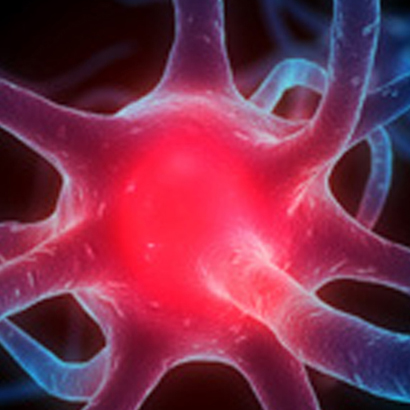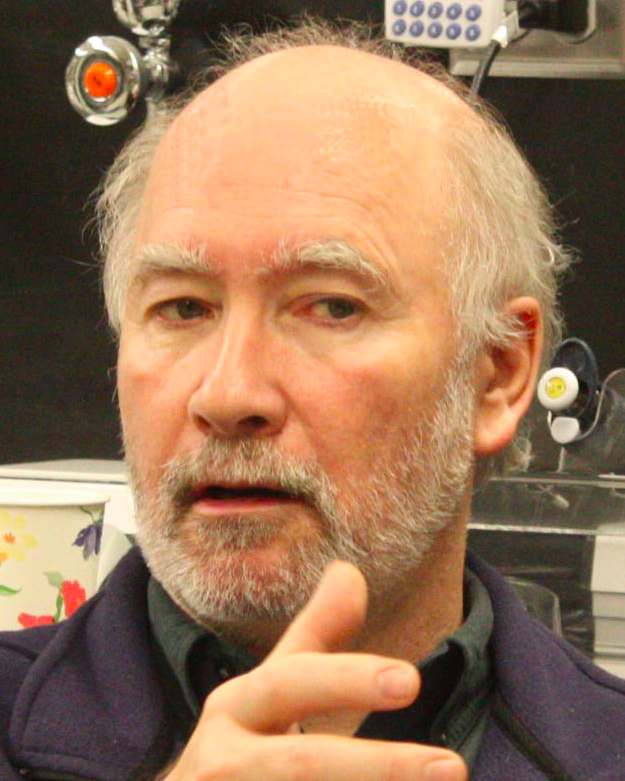Our Faculty and Staff
J.B. Alexander (Sandy) Ross
Professor of Chemistry and Biochemistry
Contact
- Office
- ISB 219
- Phone
- 406-243-4560
- Fax
- 406-243-4227
- sandy.ross@umontana.edu
Personal Summary
J.B. Alexander (Sandy) Ross joined the University of Montana in 2001 as Professor of Chemistry and Biochemistry and Director of the BioSpectroscopy Core Research Laboratory. Previously, he was Professor of Biochemistry and Molecular Biology and Co-Director of the Biophysics, Structural Biology, and Biomathematics Training Program at Mount Sinai School of Medicine in New York. Sandy became Associate Dean of the Graduate School at the University of Montana in 2010, Dean in 2012 and returned to faculty in 2016. In 2018, he was appointed Adjunct Professor of Chemistry and Biochemistry at the University of Lethbridge, Canada.
Sandy earned his Ph.D. at the University of Washington in 1976 under the joint supervision of D.A. Deranleau and D.C. Teller. He carried out postdoctoral research under the direction of A.L. Kwiram at the University of Washington, L. Brand at The Johns Hopkins University, and P.H. Petra at the University of Washington. He has been a Visiting Professor at the University of Parma, Italy, and a Visiting Scientist at the National Synchrotron Light Source at Brookhaven National Laboratory.
Sandy is a physical biochemist specializing in time-resolved excited-state spectroscopy and single-molecule experiments. He is an investigator in the Center for Biomolecular Structure and Dynamics and the Center for Structural and Functional Neuroscience. He is also past Director of the Sloan Indigenous Graduate Partnership at the University of Montana.
Education
B.A. in Biology, Antioch College, Yellow Springs, OH, 1970
Ph.D. in Biochemistry, University of Washington, Seattle, WA, 1976
Post-Doctoral Fellow, Physical Chemistry, University of Washington, Seattle, WA, 1976-1978
Associate Research Scientist, Biology, Johns Hopkins University, Baltimore, MD, 1978-1980
NIH Fellow in Laboratory Medicine, University of Washington, Seattle, WA, 1980-1982
Courses Taught
BCH 380 Fundamentals of Biochemistry
CHMY 305e Ethics, Science Writing and Chemistry Literature
BCH 581 Physical Biochemistry
Teaching Experience
Biochemistry and physical biochemistry since 1982
Research Interests
Macromolecular Interactions and Dynamics
We are investigating how conformational dynamics and interactions of biological molecules regulate function. Our approach is to use a combination of experimental and computational methods: we specialize in time-resolved and single-molecule fluorescence spectroscopies; and we collaborate with other groups that specialize in X-ray crystallography, NMR, analytical ultracentrifugation, inorganic chemistry and computational chemistry. Current research interests include:
Novel Probes for Studying Submicrosecond-to-Microsecond Dynamics: In contrast to fluorescence, which occurs in the time range of ps to tens-of-ns, phosphorescence (at ambient temperatures) occurs in sub-ms to ms. Thus, fluorescence lifetime measurements can provide information about local (specific-site) motions (ps to a few ns) and global motions of macromolecules with molecular weights up to 100 kDa (~50 ns). To facilitate measuring the dynamics of larger macromolecules and assemblies that are slower and occur in the 100-ns to 10-ms time-range, in collaboration with the Rosenberg group, we have been developing luminescent probes based on organo-metal complexes (metal-ligand complexes) that have excited-state lifetimes spanning this time range and that have high quantum yields and polarized emission.
Membrane-Protein Interactions and dynamics: We are using time-resolved fluorescence microscopy and single-molecule fluorescence spectroscopy to study the conformational dynamics and ligand interactions of proteins that associate with membranes, employing nanodiscs as a model-membrane platform. Nanodiscs, largely developed by Sligar and collaborators at the University of Illinois, are mono-disperse, aqueous-soluble assemblies of nm-scale, protein-belted, phospholipid bilayers. The belt proteins are recombinant constructs based on high-density apolipoprotein A1. The easily controlled lipid composition and stable properties of nanodiscs make them particularly useful as platforms for biophysical study of membrane proteins.
Through collaboration with the Demeler group at the University of Lethbridge, we are using analytical ultracentrifugation as an orthogonal approach to dual-focus fluorescence correlation spectroscopy for measuring protein interactions with nanodiscs. In collaboration with the Bowler group at the University of Montana, we are using dual-focus fluorescence correlation spectroscopy and time-resolved fluorescence anisotropy to investigate both the thermodynamics and structural dynamics of the interaction between Cytochrome c and cardiolipin-containing nanodiscs.
Structural dynamics and enzyme catalysis: Correlated motions ranging in time scales from picoseconds to microseconds have been shown to be critical in overcoming activation energy barriers to substrate binding and active site pre-organization for catalysis in enzymes that have turnover rates in the microsecond to millisecond range. A crucial step in activation of G proteins is exchange of GDP with GTP, which is mediated by guanine nucleotide exchange factors. In collaboration with the Sprang group at the University of Montana, we are using single-molecule fluorescence spectroscopy to understand the role of conformational distributions and dynamic fluctuations in the mechanism of G protein activation.
Field of Study
Physical Biochemistry
Analytical Biochemistry
Biological Fluorescence
Biothermodynamics
Selected Publications
Rosenberg E, Ross JBA, Sharmin A (2019) Phosphorescent Ru(II) Complexes as Probes of Model Membrane Systems. Adv in Bioorganometallic Chemistry, Eds. T Hirao, T Moriuchi, Chap. 12, pp. 243-264, Elsevier, Amsterdam, Netherlands doi: 10.1016/B978-0-12-814197-7.00012-1
Black LA, Ross JBA (2018) Resolving Internal and Global Dynamics of Proteins by Combination of Time-Resolved Fluorescence Anisotropy and Fluorescence Correlation Spectroscopy. Reviews in Fluorescence 2017, Ed. CD Geddes, Chap. 12, Springer Nature, Switzerland, 2018, doi: 10.1007/978-3-030-01569-5_12
Pohkrel S, Decato D, Rosenberg E, Ross JBA, Terwilliger M (2017) Synthesis, structure, photophysical and electrochemical properties of Ru(TFA)(CO)(PPh3)2(L) (L=2-phenylpyridine, 2-p-tolylpyridine) and Ru(CO)(PPhMe2)2(L)(L′) (L= TFA, H) (L′= bipyridine, L′= 4,4′-dimethylbipyridine) relationships between ancillary ligand structure and luminescent properties. J Organomet Chem 849-850: 306-314. doi: 10.1016/j.jorganchem.2017.03.026
Penny WM, Steele HB, Ross JBA, Palmer CP (2017) Phospholipid Bilayer Affinities and Solvation Characteristics by Electrokinetic Chromatography with a Nanodisc Pseudostationary Phase. Electrophoresis 38: 738-746. doi: 10.1002/elps.201600381
McClelland LJ, Steele HB, Whitby F, Mou T-C, Holley D, Ross JBA, Sprang SR, Bowler BE (2016) Cytochrome c Can Form a Well-defined Binding Pocket for Hydrocarbons. J Am Chem Soc 138: 16770-16778. doi: 10.1021/jacs.6b10745
Rosenberg E, Abbott G, Ross JBA, McVay R, Terwilliger M (2016) Luminescence Quenching and Enhancement by Adsorbed Metal Ions with Ruthenium Diimine Complexes Immobilized on Silica Polyamine Composites. Macromol Symp 364:47-55. doi: 10.1002/masy.201500179
Her C, Filoti DI, McLean MA, Sligar SG, Steele HB, Ross JBA, Laue TM (2016) The Charge Properties of Phospholipid Nanodiscs. Biophys J 111: 989-998. doi: 10.1016/j.bpj.2016.06.041
Black LA, Thomas CJ, Nix GN, Terwilliger MC, Sprang SR, Ross JBA (2016) Nanosecond Dynamics of Gαi1 Bound to Nucleotides or Ric-8A, a Gα Chaperone with GEF Activity. Biophys J 111: 722-731. doi 10.1016/j.bpj.2016.07.021
Sun Y, Stine JM, Sharmin A, Atwater DZ, Ross JBA, Briknarová K (2015) Structural and Functional Characteristics of the Acidic Region from the RIZ Tumor Suppressor. Biochemistry 54: 1390-1400. doi: 10.1021/bi501398w
Abbott G, Brooks R, Rosenberg E, Terwilliger M, RossJBA, Ichire OOL (2014) Surface-Bound Ruthenium Diimine Organometallic Complexes: Excited-State Properties. Organometallics, 33:2467-2478. doi: 10.1021/om401153x
Sharmin A, Salassa L, Rosenberg E, Ross JBA, Abbott G, Black LA, Terwilliger M, Brooks R (2013) Photophysical Studies of Bioconjugated Ruthenium Metal-Ligand Complexes Incorporated in Phospholipid Membrane Bilayers. Inorg Chem, 52:10835–10845. doi: 10.1021/ic400706u
Manhat BA, Brown AL, Black LA, Ross JBA, Fichter K, Vu T, Richman E, Goforth AM (2011) One-step Melt Synthesis of Water Soluble, Photoluminescent, Surface-Oxidized Silicon Nanoparticles for Cellular Imaging Applications. Chem Mater, 23:2407-2418. doi: 10.1021/cm200270d
Wang H, Lu M, Tang M-S, Van Houten B, Ross JBA, Le XC (2009) DNA Wrapping on UvrB, Mediated by UvrA, is an Early Event in the Damage Recognition Pathway during E. coli Nucleotide Excision Repair. Proc Natl Acad Sci USA, 106:12849-12854. doi:10.1073/pnas.0902281106
Sharmin A, Darlington RC, Hardcastle KI, Ravera M, Rosenberg E, Ross JBA (2009) Tuning Photophysical Properties with Ancillary Ligands in Ru(II) Mono-Diimine Complexes. J Organometallic Chem, 694:988-1000. doi: 10.1016/ j.bpj.2008.10.018
Minazzo A, Darlington RC, Ross JBA (2009) Loop Dynamics of the Extracellular Domain of Human Tissue Factor and Activation of Factor VIIa. Biophysical J, 96:681-692. doi: 10.1016/ j.bpj.2008.10.018
Sharmin A, Minazzo A, Salassa L, Rosenberg E, Ross JBA, Shariff SE, Hardcastle KI (2008) Synthesis, Structure, Photophysical and Electrochemical Behavior of 2-amino-Anthracene Triosmium Clusters. Inorg Chim Acta 361:1624-1633. doi: 10.1016/j.ica.2007.03.059
Garino C, Gobetto R, Nervi C, Salassa L, Rosenberg E, Ross JBA, Chu X, Hardcastle KI, Sabatini C (2007) Spectroscopic and Computational Studies of a Ru(II)Terpyridine Complex: The Importance of Weak Intermolecular Forces to Photophysical Properties. Inorg Chem 46:8752-8762. doi: 10.1021/ic7010343
Senear DF, Tretyachenko-Ladokhina V, Opel ML, Aeling KA, Hatfield GW, Franklin LM, Darlington RC, Ross JBA (2007) Pressure Dissociation of Integration Host Factor-DNA Complexes Reveals Flexibility-Dependent Structural Variation at the Protein-DNA Interface. Nucleic Acids Research 35:1761-1772. doi:10.1093/nar/gkl1122
For a full list of publications, please view Ross Publications
Affiliations
American Chemical Society
Biophysical Society
Professional Experience
- Visiting Scientist:
National Synchrotron Light Source, Brookhaven National Laboratory
University of Parma
University of Torino
- Consulting:
Fluorescence Innovations - time-resolved fluorescence
Quantum Northwest - fluorescence instrumentation
Darby & Darby - intellectual property
Fluorescence Unlimited - time-resolved fluorescence in clinical chemistry
- Executive Editor, Analytical Biochemistry
Honors / Awards
A.P. Sloan Mentor of the Year (Compact for Faculty Diversity Institute, 2010)

